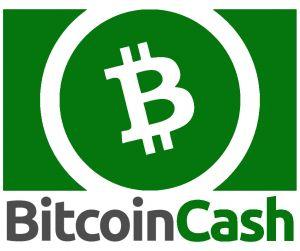Bitcoin Forks Guide – In Search of the Original Satoshi
Bitcoin forks are a phenomenon which has followed Bitcoin from its foundation, resulting in more than one hundred such projects, all with varying degrees of success and relevancy. Some of the projects are still in the development and do not have a…

Bitcoin forks are a phenomenon which has followed Bitcoin from its foundation, resulting in more than one hundred such projects, all with varying degrees of success and relevancy. Some of the projects are still in the development and do not have a tradable currency, while the others are relegated to exist as the pieces of Bitcoin’s history. In the following guide, we will focus only on the most relevant and/or interesting of the forks, restricting our treatment of them only to those which are being traded as of November 2018.
What is a Bitcoin fork?
Bitcoin fork is another version of Bitcoin with some changes in the original network protocol. At the most basic level, a fork happens when a blockchain splits into two (or more) potential paths forward. This can happen either due to differences network’s transaction history or addition of new rules in the code.

Simply put, anyone can fork Bitcoin. Due to its open-source nature, anyone can copy Bitcoins code and launch their own version of Bitcoin with slightly different rules. However, that doesn’t mean that all network participants (nodes) will follow you and mine your Bitcoin fork instead of the original Bitcoin (BTC). The true power of Bitcoin lurks not in the code but in the people who agree to its rules, and to this day Bitcoin’s network effects are nearly impossible to replicate.
However, that doesn’t mean people haven’t tried to create their "improved" version of Bitcoin. Here are some of the best-known Bitcoin forks.
Bitcoin Cash (BCH)

A heavy-hitter among the Bitcoin forks, Bitcoin Cash (BCH) presents itself as the Bitcoin as-it’s-meant-to -be. The BCH was launched in August 2017, as a response to what Roger Ver and his band of disaffected Bitcoin miners perceived as the key issues with the “mother” cryptocurrency:
- Slow transaction times
- High fees
- High energy consumption
What Bitcoin Cash did to resolve these issues was to change the Bitcoin’s block size from 1 MB to 8 MB, followed by 32 MB in mid-2018. This was supposed to make the verification process faster, irrespective of the number of mines which serve to support it. Modifications to the original protocol allowed for the shortening of transaction procedures and created the potential for the network to scale more efficiently in parallel with the rise in the number of its users.
Soon enough, Bitcoin Cash became one of top ten coins by market capitalization, ranking at number 4 as of November 2018. This success came against the range of problems which the currency initially faced, including:
- Being confused with Bitcoin since it shared a similar logo and had its origins in the same community
- Being sometimes described as a “low-end” variant of the currency it forked from
- Centralization with Bitcoin Cash was seen as a more prominent issue compared to Bitcoin
Despite these challenges, Bitcoin Cash eventually prevailed, only to come face to face with another issue: conflicting attitudes about its block sizes among the members of its community. Eventually, these cracks turned to gulches and the community split into two main camps s on November 15.
Those who opted to “protect” Bitcoin Cash from implementing overly radical changes with block sizes now represent the Bitcoin ABC faction, with ABC standing for “Adjustable Blocksize Cap”. They are led by Roger Ver and mining hardware manufacturer Bitmain. As of November 2018, the BCH ABC seems to be getting the upper hand, with its accumulating more proof-of-work (PoW) and winning over several major cryptocurrency exchanges such as Coinbase, Kraken and Bittrex which allowed it to keep its original BCH ticker.
Bitcoin SV (BSV)

Bitcoin SV (BSV, with “SV”, stands for “Satoshi’s Vision”) is the other major fork of Bitcoin Cash which established itself as a standalone cryptocurrency with the mission to uphold what its creators claim to be the original vision of the Bitcoin’s enigmatic founder.
The coin was developed by the blockchain development firm nChain, with the support from one Craig “Faketoshi” Wright. His faction supported forking from the Bitcoin Cash in a quest to rediscover and restore the “original” Satoshi’s protocol which would allow for increasing the BCH block size from the current 32 MB to 120 MB. This will arguably increase the network capacity and allow it to scale better compared to what the Bitcoin Cash (itself a fork) was able to offer.
While the dust of the recent fork war has not yet settled, Bitcoin Cash SV recently pushed its way up the top 10 coin list, with its market cap hitting USD 1.6 billion in late November 2018. Its proponents claim that losing the BCH ticker was not important and that BSV will be accepted by the majority ofprojects and businesses in the coming years since it will eventually win over the Bitcoin Cash’s native application ecosystem.
Bitcoin Gold (BTG)

Bitcoin Gold (BTG) was brought into existence by the members of the Bitcoin community who pushed for the hard fork with the hope to correct the following issues with Bitcoin:
- The proponents of Bitcoin Gold felt that the Bitcoin network has become too centralized. This was best seen in the case of mining, with the specialized hardware giving undue advantage to the miners who utilize it. This particularly referred to the use of application-specific integrated circuits (ASICs) for the mining taking place on its blockchain. As a “cure”, the Bitcoin Gold team implemented the Equihash hashing algorithm which made it less advantageous to work with the ASIC-based hardware.
- In addition to the dominance of the specialized mining hardware, Bitcoin’s ecosystem is seen as increasingly coming under the sway of big businesses armed with powerful mining rigs. To uphold the early vision of Bitcoin as a fully decentralized peer-to-peer system, Bitcoin Gold made it possible for the miners to acquire the coins with the use of everyday non-specialized hardware, such graphics processing units (GPUs).
- Bitcoin’s adoption by merchants is seen as taking too long. To speed up this process, Bitcoin Gold went on to develop the BTGPay solution as a platform and a virtual marketplace for merchants who accept Bitcoin Gold. At the same time, this network gathers various stakeholders such as payment service providers and e-commerce integrators that work on easing the adoption and use of this cryptocurrency.
As the forking procedure was complete, each owner of BTC received the same amount of Bitcoin Gold at the ratio of 1:1.
Bitcoin Diamond (BCD)

Bitcoin Diamond (BCD) is yet another fork of Bitcoin which was implemented in response to perceived shortcomings of its original currency. Bitcoin Diamond was created in November 2017 by Bitcoin miners going under the name of “Team Evey” and “Team 007” who saw the fork as a way to make changes to the Bitcoin Core protocol in the following segments:
- Bitcoin Diamond fork seeks to offer faster transaction confirmations. To achieve this, Bitcoin Diamond deployed Lightning Network as its second layer payment protocol in July 2018. Lightning Network supports real-time transaction processing by having a portion of them take place off the blockchain, with the smart contract system being in charge of their management. The blockchain itself is tasked with handling the confirmation of the final state of these transactions. The implementation of Lightning Network was also carried out in support of Bitcoin Diamond’s ambition to become the preferred cryptocurrency for frequent payments involving both high and low amounts.
- Faster transactions should be followed by offering much lower fees. Bitcoin’s inability to live up to the promise of creating an affordable transaction system was seen as its “original sin” against the Satoshi Nakamoto’s vision. This was made worse by having high payment thresholds for potential new users. To combat this, Bitcoin Diamond reduced its fees and strengthened the original platform’s capacity to handle transactions. Bitcoin Diamond also increased the total supply of its coins to 210 million BCD in order to make their acquisition more accessible for an average user (compared to 21 million BTC). Those who held 1 BTC before the fork had their token change its value to 10 BCD after the fork.
- Mining should be more inclusive. To that effect, the Bitcoin Diamond team removed the Bitcoin’s iconic SHA-256 algorithm to decentralize the entire mining procedure. Bitcoin Diamond’s X-13 makes life much harder for the owners of specialized mining hardware that puts them in what the BCD developers describe as an unfairly advantageous position over the regular miners.
Lightning Bitcoin (LBTC)

Lightning Bitcoin (LBTC) emerged as the fork of the Bitcoin blockchain in December 2017. The main advantage the Lightning Bitcoin counts on is its desire to combine the benefits of both Bitcoin and Ethereum to create a more versatile and efficient blockchain. The LBTC team sought to offer several distinguishing features which would arguably put it ahead of the competing forks and other cryptocurrencies.
- Autonomous Digital Democracy. Lightning Bitcoin’s on chain governance system includes all token holders within its blockchain network and turns them into actors whose vote is treated as equal in the decision-making process. The LBTC uses theDPoS Consensus Mechanism which serves as the foundation of its “digital democracy” ecosystem and avoid the risks associated with the Proof-of-Work systems.
- Decentralization. The same DPoS mechanism makes it possible for the LBTC holders to pick among 101 nodes in order to ensure transaction validation. The token holders can also vote to designate “bookkeeping nodes” which are nominated based on the received weighted votes. Expanding the voting rights of the token owners is seen as the instrument of advancing the decentralization of the LBTC network.
- Scalability.Lightning Bitcoin hopes to achieve a higher level of scalability with the help of DPoS and the limiting of the number of validators on its blockchain.
- Fast Transactions. Based on the LBTC protocol, the ultimate goal of Lightning Bitcoin is to have the payments processed in a matter of seconds. A limited number of verification nodes paired with the 2MB block size is supposed to shorten the time needed to reach consensus to seconds and, thus, offer higher transaction speeds. The maximum number of transactions the LBTC aims to process is about 24 million per day.
- Accessibility. The transaction fees with the Lightning Bitcoin could start at 0.00001 LBTC per transaction.
Bitcoin Interest (BCI)

Bitcoin Interest (BCI) was forked from Bitcoin in the spring of 2018 with the goal to create a new global payment ecosystem which will focus on the savings management. This will be arguably achieved by implementing technology which will allow the users to earn interest with the coins they hold (“park”), similar to what the real-life banks offer with their savings accounts.
The technology which will make it possible is focused on three main areas:
- There is a Bitcoin Interest Pool: Blocks on the Bitcoin Interest network have a two-reward system, with its larger portion going to the miner and the smaller one being included in the interest pool. This pool is used to make interest payments to the users who choose to “park” their coins. Although the BCI initially used the Equihash algorithm for mining, it switched to the ProgPoW in September 2018 in order to mitigate the advantages enjoyed by the users of the ASIC hardware.
- Interest Rounds: Users can choose weekly or monthly interest periods to park their coins and reclaim their share of the interest pool. Those who choose to park their coins are required to do so throughout an interest round. Yet, there is an option to move the coins before this round has expired, but it will prevent the user from receiving their interest payment.
- Interest Rates Is Not Fixed: The BCI interest rate depends on the number of coins the users choose to park and the number of coins parked in the interest round. The system constantly checks the length of time the coins are parked throughout these rounds. Once the round has expired, it will distribute the interest pool balance to the coin holders in proportion.
BitcoinX (BCX)

BitcoinX (BCX) forked from the Bitcoin blockchain in December 2017 with the mission to combine Bitcoin’s achievements with new functionalities:
- BitcoinX goes for high expandability, which is to be brought about by its implementation of smart contract technology. This tech is supposed to reduce the high fees associated with its predecessor, while the transaction processing efficiency should be helped by its 2-minute block intervals.
- BitcoinX wants to offer better privacy and safety features based on combining the existing Bitcoin network technology with zero knowledge proof system.
- Cross-chain development is yet another area the BitcoinX aims to focus on. It is supposed to enable the exchange of data between various chains to create an umbrella ecosystem for application development.
- The total supply of coins was capped at 210 billion, with each BTC holder receiving 10000 BCX for a single token owned.
Super Bitcoin (SBTC)

Developed under the slogan “Make Bitcoin Great Again”, Super Bitcoin (SBTC) sought to offer better privacy and scalability compared to Bitcoin, as well as implement smart contract functionality. The fork took place in December 2017, with 1 SBTC credited for every BTC owned at the fork point.
Super Bitcoin aims to distinguish itself by designing its features based solely on the demands of its community members. So far, these had to do with:
a) Privacy
Zero-knowledge proof technology was implemented in order to strengthen privacy features.
b) Scalability
Supported smart contracts are to become Turing-complete to allow for better functionality of the system, as well as to allow it to improve the scalability of its platform.
c) Larger blocks
Block size with Super Bitcoin was increased to 8MB.
In mid-2018, the team behind the Super Bitcoin announced its rebranding as the Nash Blockchain Platform.
